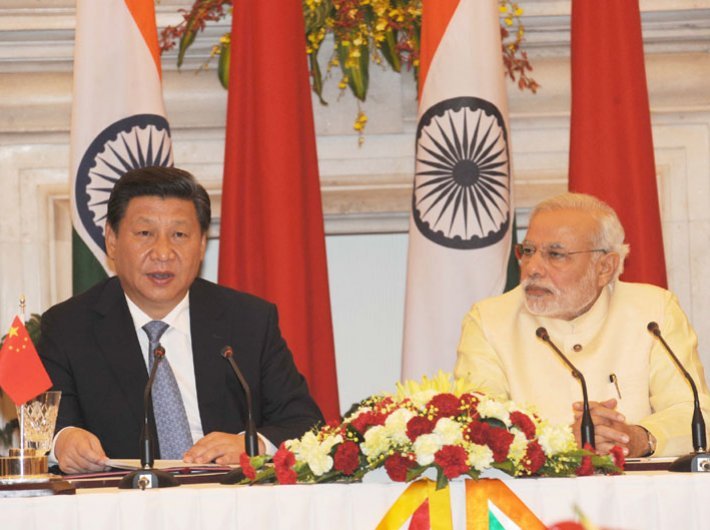It is perhaps neither new nor is it unacknowledged by people in general that India has, after the deadly scuffle with Chinese soldiers on the Line of Actual Control, decided to do away with caution or hesitation while dealing with China on issues related to foreign policy, business and investment and strategy.
On the policy front, hints came from none less than minister of external affairs S Jaishankar, who is credited for putting India’s viewpoint before the international audience on diplomatic and strategic issues in a comprehensive manner. Recently, participating in a programme organised by the CNBC-TV18 group, he said the era of great caution and greater dependence on multilateralism has gone.
This was quite apparent in India’s stand against China. After banning 59 Chinese apps, India put a blanket ban on the participation of Chinese companies in highway projects, including through the joint venture route. It rescinded Chinese plans to invest in India’s micro, small and medium enterprises (MSME) sector. Then tightening the noose further, India has restricted Chinese companies from bidding for public sector contracts.
The centre has directed that no order for goods, services or turnkey projects, including consultancy as well as non-consultancy work, shall be given to companies from countries that share a land border with India unless they are registered with a competent authority in India. This apart, political and security clearance from the ministry of home affairs and ministry of external affairs will be compulsory.
This move is considered to have a far-reaching impact on Chinese companies providing goods and services to India. But then India too will suffer to an extent. Still, it seems it is willing to bear costs in the short run in order to have larger gains later on. “Such moves are a calculated response to shape Chinese calculus on the border issue which is getting serious by the day in the absence of any commitment by the Chinese to resolve it amicably,” Harsh Pant, head of the strategic studies at Observer Research Foundation, was quoted by Bloomberg.com as saying.
Since June 6, several rounds of talks at the level of senior commanders and the Working Mechanism for Consultation and Coordination meet at the diplomatic level have taken place between India and China. Despite the fact that at every meet, the Chinese side agreed for early and complete disengagement of the troops along the LAC and de-escalation of tension in border areas, soldiers of the People’s Liberation Army stayed put in Pangong Tso lake area.
Experts say even if this strategic area in Eastern Ladakh gets disengaged by PLA troops sometimes latter on, the June 15 incident has rubbed salt into India’s wounds so deep that young generation Indians who have merely heard of the 1962 War would never like their political masters to treat China merely as a rival, but as a dangerous foe which needs to dealt with strong hands.
A hint to this can be seen in India's attempt to reset strategy towards its One-China policy. It has appointed 1999-batch IFS officer and current joint secretary in Americas division of the ministry of external affairs, Gourangalal Das, as the new envoy to Taipei. A formal announcement to this regard is expected to be made soon. Das is going to be the director-general of the India-Taipei Association which serves as the unofficial diplomatic representative of India in Taipei.
This is the first time India is going to appoint its representative in Taiwan which is so far recognised by only 15 small countries of the world. Then weeks ahead of the Galwan Valley incident where 20 Indian soldiers died in the mediaeval-age type fight with Chinese soldiers, who used stones, nail studded wooden clubs and iron rods in attack, BJP parliamentarians Meenakshi Lekhi and Rahul Kaswan attended the swearing-in ceremony of Taiwan president Tsai Ing-wen in a virtual format.
These two BJP MPs were among the 92 dignitaries from 41 countries who had attended the swearing-in ceremony, using digital technology. Besides, thoughts are given over increasing trade and investment ties with Taiwan. At the moment, three of the largest contractors for Apple iPhones - Foxconn, Wistron and Pegatron - are expanding their production facilities for iPhones in India. Wistron and Foxconn have planned to invest Rs 7,500 crore in India over five years. The two-way trade between India and Taiwan is currently $7 billion.
Yet punch to China came when India raised China’s draconian new security law for Hong Kong at the Geneva-based Human Rights Council. This law gives China unprecedented powers to launch a crackdown against dissent under the garb of tackling crimes of secession, terrorism, subversion and collusion with foreign elements. Without taking China’s name, India’s permanent representative to the United Nations in Geneva, Rajiv Chander, said New Delhi is “keeping a close watch on recent development in Hong Kong”. He also expressed his hope that “the relevant parties will take into account these views and address them properly, seriously and objectively.” India had never made such a bold intervention in China’s internal matters. Post the Galwan incident, this change in India’s behaviour towards China should not surprise experts.
Beyond trade and diplomacy, India is also using its strategic heft with Quad, also comprising the US, Australia and Japan, to give China a tough time in Indo-Pacific region. Shedding its inhibition and ignoring sensitivity of Beijing, India is considering inviting Australia to the annual Malabar naval exercise. A formal decision in this context is likely to be taken in the next couple of weeks.
But the overall objective is to provide effective military deterrence to China by bringing like-minded countries on one platform. Just recently, the US Navy’s largest warship USS Nimitz (which is a nuclear-powered aircraft carrier) along with its Carrier Strike Group (CSG) conducted Passex exercise with the Indian Navy off the coast of Andaman and Nicobar. Two days after the Passex exercise in the Indian Ocean, the Australian, Japanese and the US navies held their trilateral exercise in the Philippine Sea. Some experts saw it as symbolic ‘Quad’ naval drills in the Indian Ocean and the Philippines Sea. This offered a hint to a future plan of all four democratic countries in the region.
For India, the border crisis has forced it to reshape the very foundation of its China policy which hitherto stopped it from taking an aggressive stand against Beijing. Now, gloves are off; India will no more follow caution, reluctance or inhibition in its deal with China. Jaishankar’s remark, that the era of great caution and greater dependence on multilateralism has gone, broadly conveys India’s new approach towards China. It is undoubtedly an approach that puts China in the list of India’s inveterate adversaries. But can China afford such an approach from India, especially when it is dreaming of becoming a world superpower?

